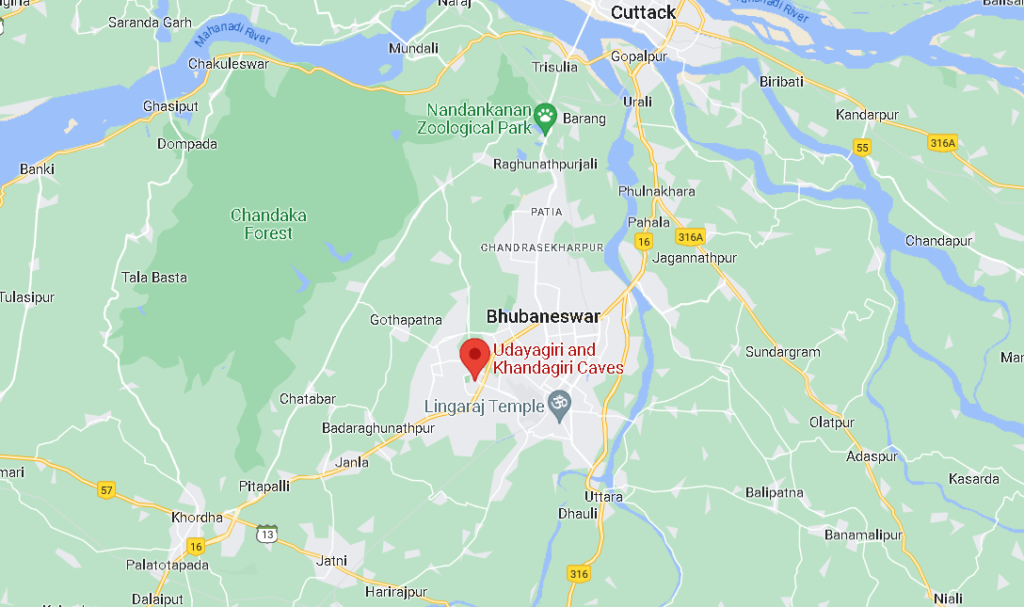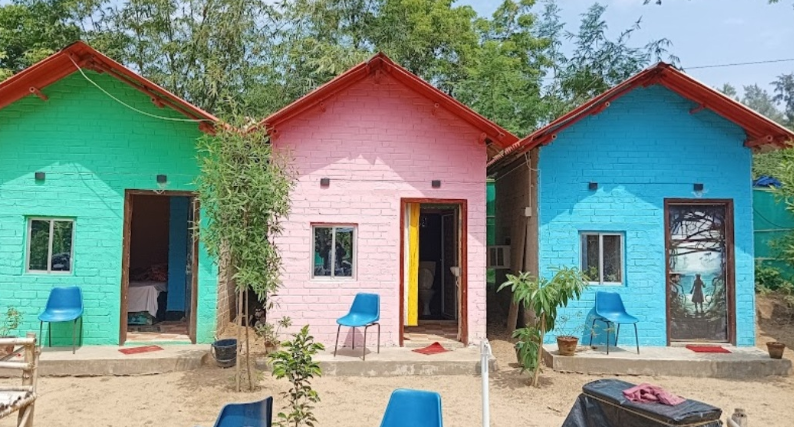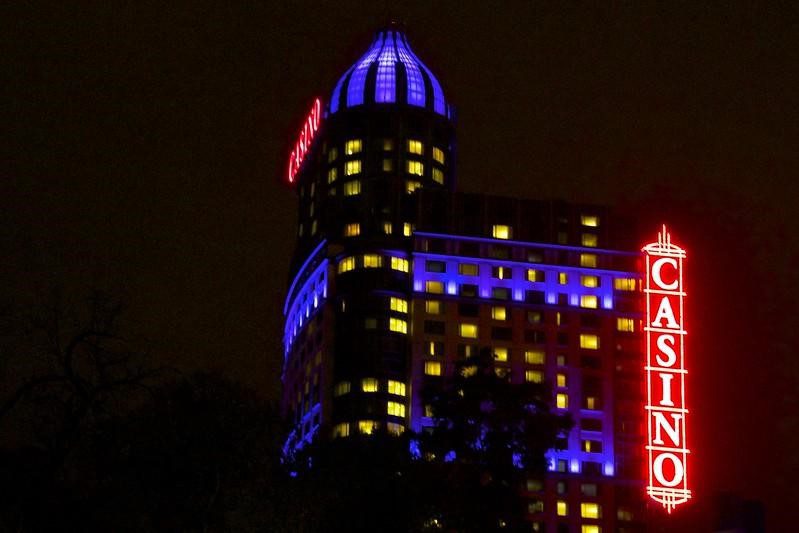Udayagiri and Khandagiri Caves Timings Bhubaneswar Odisha Tourism
Udayagiri and Khandagiri Caves Timings Bhubaneswar Odisha Tourism: Udayagiri and Khandagiri Caves are located on hills, about 7 kilometers away from the city of Bhubaneswar in Odisha, India. These caves are among the ancient and historical caves of India, with references in the Hathigumpha Inscription as Kumari Parvat.
It is said that they are some of the earliest caves made by the Jain community. Udayagiri has 18 caves, while Khandagiri has 15 caves. The most significant cave in this group is Rani Gumpha, a two-story monastery inside Udayagiri. These caves are also known as the Katak Caves. This place holds great historical importance, attracting tourists and history enthusiasts alike.
In this article, we will discuss the history of the Udayagiri and Khandagiri caves, along with information related to their journey. So, make sure to read this article until the end.
History of Udayagiri and Khandagiri Caves
The history of these caves dates back to the Gupta period, approximately 350-550 BCE, which was an era of profound Hindu religious thought. Historians and researchers believe that most of the caves of Udayagiri and Khandagiri were excavated during the reign of King Kharavela in the 2nd century BCE to serve as residential blocks for Jain monks. Some intricately carved caves are considered to belong to the 1st century BCE. The discovery of these ancient rock-cut caves was first made in the 19th century CE by a young British officer named Andrew Stirling.
Recognizing the historical significance of these caves, the Archaeological Survey of India has taken them under its protection and now oversees their preservation.
Caves of Udayagiri
Udayagiri caves are located on the right side of the hill and consist of 18 main caves. Compared to the caves of Khandagiri, the Udayagiri caves are more beautiful and impressive. When you visit here, you can explore these 18 caves known as “Gumpha,” each with its unique name.
Rani Gumpha: This cave is the largest and most famous among the Udayagiri and Khandagiri caves, and it houses several ancient and beautiful sculptures.
Bajaghara Gumpha: Bajaghara Gumpha is a small cave that was used as a shelter for Jain monks in ancient times. The rectangular-shaped cave has a stone bed and pillow.
Chhota Hathi Gumpha: This cave is renowned for six small elephant-shaped figures and a sculpture of a guardian.
Alakapuri Gumpha:
Alakapuri Gumpha is a two-story cave with a prominent lion sculpture gripping its prey in its mouth.
Jaya Vijaya Gumpha: This cave, also a two-story structure, features a beautifully adorned female figure with heavy earrings and braided hair.
Panasaa Gumpha: Panasaa Gumpha is a small cave with no significant features but is still worth exploring.
Thakurani Gumpha: Thakurani Gumpha is a two-story cave with several small sculptures that can be observed.
Patalapuri Gumpha: This cave stands tall with arched doorways.
Mankapuri and Swargapuri Gumpha: This cave displays statues of two male and two female figures worshipping a Jina brought back from Magadha by King Kharavela. The caves also bear the religious symbol of Jainism, which is seen in a seated position.
Ganesh Gumpha: Ganesh Gumpha is one of the most important caves in Udayagiri, named after the sculpted figure of Ganesh at the back of the right cell. Two large elephant sculptures seem to be offering a garland.
Jambeswara Gumpha: Jambeswara Gumpha is a small cave in Udayagiri, and it is assumed to be the cave of Nayaki, the wife of Mahamada.
Vyaghra Gumpha: Vyaghra Gumpha is part of the Udayagiri cave complex and is notable for its exceptional carving of a tiger, which gives it its name.
Sarpa Gumpha: Sarpa Gumpha is a small and unusual cave with two inscriptions.
Hathi Gumpha: Hathi Gumpha is a large natural cave in the Udayagiri cave complex, named after the excellent carving of an elephant.
Dhanaghara Gumpha: Dhanaghara Gumpha is a small cave with two broad pillars and carved gatekeepers at the entrance.
Haridas Gumpha: Haridas Gumpha has three entrances and a notable Barahmadi (twelve-faced) sculpture on the front.
Jagannath Gumpha: This cave has three entrances.
Rasui Gumpha: Rasui Gumpha is the last cave among the Udayagiri caves.
Khandagiri Caves
Whenever you visit this region during your journey from Bhubaneswar, the Khandagiri hills will be on your left, where there is a group of 15 caves that we will discuss below:
Tatowa Gumpha: This cave is the first among the Khandagiri caves. Its entrance features carvings of parrots, hence it is known as Tatowa Gumpha.
Tatowa Gumpha: Cave number 02 of the Khandagiri caves is also known as Tatowa Gumpha. This cave contains various sculptures of animals, birds, chaitya mehraabs, and depictions of nymphs and celestial musicians.
Anant Gumpha: These caves house sculptures of women, elephants, and vultures, among others.
Tentuli Gumpha: Tentuli Gumpha is a small rock-cut chamber with only one column.
Khandagiri Gumpha: Khandagiri Gumpha is a two-story rock-cut cave, which is essentially a hollowed-out cell.
Dhyana Gumpha: This cave was used by Jain monks for meditation in ancient times.
Navamuni Gumpha: Navamuni Gumpha is a chamber that has cut-out niches for the images of nine Jain Tirthankaras and Sasana Devi.
Barabhujee Gumpha: In this cave, there are twenty-five figures of Tirthankaras on the three sides of the wall and Chakreshwari with twelve arms in the center, hence the cave’s name Barabhujee.
Trusula Gumpha: Trusula Gumpha is the primary cave among the Khandagiri caves, and it features three images of Rishabhadeva in the Kayotsarga posture. Additionally, there are twenty-four images of Jain Tirthankaras in this cave.
Ambika Gumpha: This cave contains three images, including one of Lord Rishabhadeva and one of Amarachandra, a Tirthankari goddess.
Lalatendu Kesari Gumpha: Lalatendu Kesari Gumpha has images of Rishabhadeva and Parshvanatha, added to the caves by the Somavanshi dynasty in the 11th century.
After these, the information about other caves is unknown.
Timings of Udayagiri and Khandagiri Caves
The Udayagiri and Khandagiri caves are open for tourists from morning till evening, allowing you to visit anytime during the day. Please note that for a detailed exploration of these caves, allocate around 3-4 hours of your time.
Entry Fee of Udayagiri and Khandagiri Caves
- For Indian tourists: 15 rupees
- For children under 15 years: Free
- For foreign tourists: 300 rupees
Tips for Visiting Udayagiri and Khandagiri Caves
Whenever you plan a trip to Udayagiri and Khandagiri, keep the following tips in mind to avoid any inconvenience or trouble:
- Wear comfortable clothes and shoes as you may need to walk on foot to explore the caves.
- Maintain silence inside the caves and refrain from making loud noises.
- Avoid touching or defacing the walls with inscriptions or images, as the site is under the supervision of the Archaeological Survey of India, and such actions may lead to legal consequences.
- Be cautious while visiting during rainy weather as the surfaces may be slippery, increasing the chances of slipping.
Places to visit around Udayagiri and Khandagiri Caves
If you are planning to visit the Udayagiri and Khandagiri Caves in Bhubaneswar, let us inform you that along with these caves, there are several other famous temples and tourist attractions in Bhubaneswar that you can explore during your trip:
- Parashurameshwar Temple
- Mukteshwar Temple
- Lingaraj Temple
- Brahmeshwar Temple
- Chausath Yogini Temple
- Dhauli Hill
- Nandankanan Zoological Park
- Odisha State Museum
- Ramchandi Beach
Best Time To Visit Udayagiri And Khandagiri Caves
The best time to visit the Udayagiri and Khandagiri Caves is between November and March. As Bhubaneswar experiences hot summers, these months are pleasant, allowing you to explore the attractions comfortably without feeling the summer heat.
Accomodations
If you are searching for hotels to stay during your visit to the Udayagiri and Khandagiri Caves, rest assured that in Bhubaneswar, being a famous pilgrimage and tourist destination in India, you have a wide range of options available. There are hotels, lodges, dharamshalas, and hostels available in all budget categories with various facilities to choose from for your trip.
How to Reach Udayagiri and Khandagiri Caves Bhubaneswar
If you are planning to visit the Udayagiri and Khandagiri Caves and wondering how to reach them by flight, train, or road, let us provide you with the details:
How To Reach Udayagiri and Khandagiri Caves By Flight:
For tourists who wish to travel by flight to explore the caves, Bhubaneswar Airport, also known as Biju Patnaik International Airport, is the nearest airport situated approximately 8 kilometers away. Once you arrive at the airport, you can reach Udayagiri and Khandagiri Caves in about 15-20 minutes using a cab, taxi, or other local transportation services.
How To Reach Udayagiri and Khandagiri Caves By Train:
Bhubaneswar has its own railway station, well-connected to major cities in the eastern part of the country, making it a preferred option for tourists to travel by train. Regular superfast trains are available from Kolkata, Mumbai, Delhi, Chennai, Hyderabad, Bangalore, and more, making the journey convenient.
How To Reach Udayagiri and Khandagiri Caves By Road:
To reach the Udayagiri and Khandagiri Caves by road, there are deluxe buses, AC coaches, and government buses available from most major cities. The Baramunda Bus Stand, located approximately 5 kilometers from the city center, serves as a major bus terminal connecting Bhubaneswar to other cities. You can also reach here by your personal vehicle using National Highways 5 and 203.
In this article, you have learned in detail about the Udayagiri and Khandagiri Caves in Bhubaneswar. Let us know how you liked our article in the comments.
For more information follow us on Facebook and Twitter.
Related Article: Murga Mahadev Temple And Waterfall Keonjhar Odisha Tourism
GOOGLE MAP: Udayagiri and Khandagiri Caves in Bhubaneswar











